
How to Use LED Two Pin (Red): Examples, Pinouts, and Specs
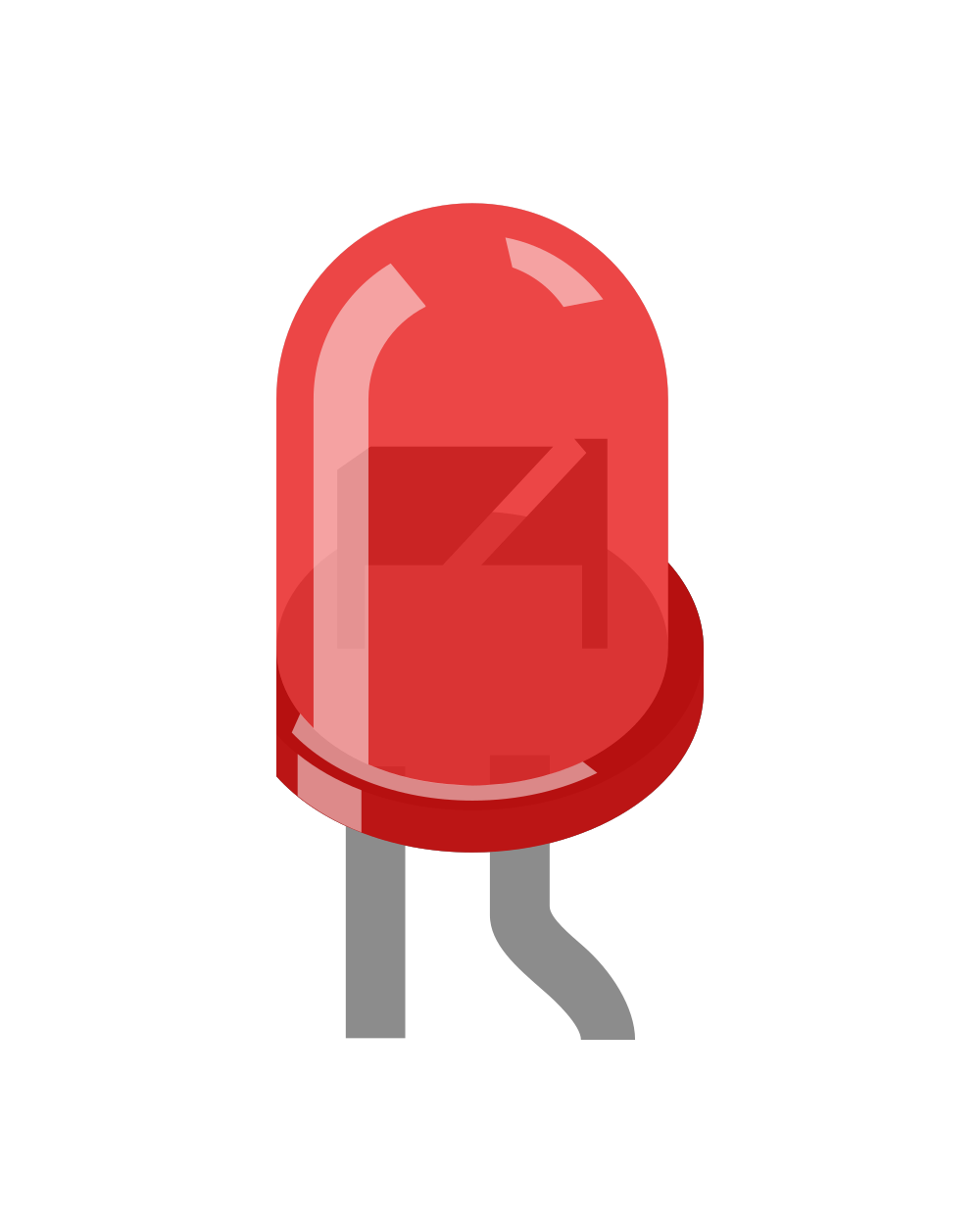
 Design with LED Two Pin (Red) in Cirkit Designer
Design with LED Two Pin (Red) in Cirkit DesignerIntroduction
The LED Two Pin (Red) is a light-emitting diode that emits red light when an electric current flows through it. It is a widely used electronic component in various applications due to its simplicity, efficiency, and reliability. This LED is commonly employed as an indicator in electronic devices, status displays, and decorative lighting.
Explore Projects Built with LED Two Pin (Red)
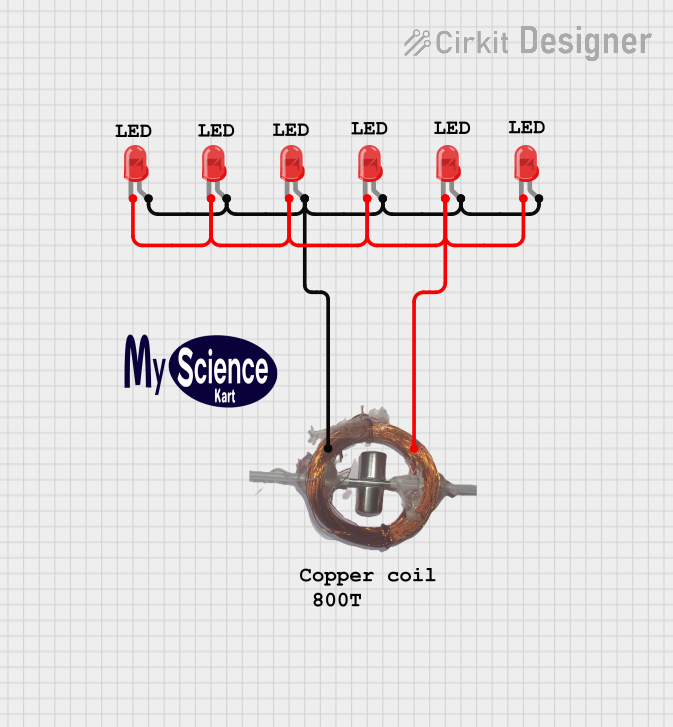
 Open Project in Cirkit Designer
Open Project in Cirkit Designer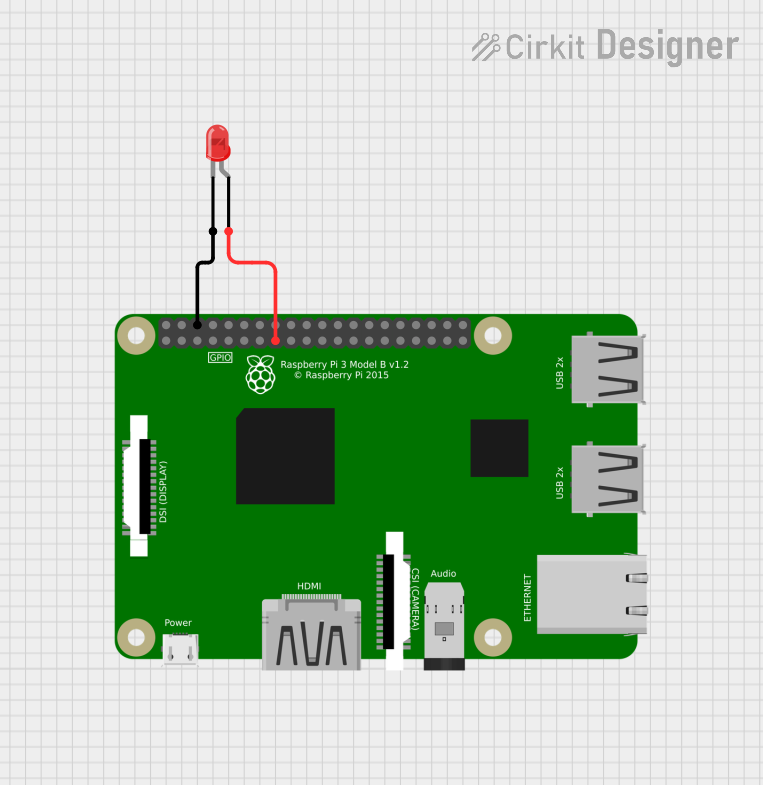
 Open Project in Cirkit Designer
Open Project in Cirkit Designer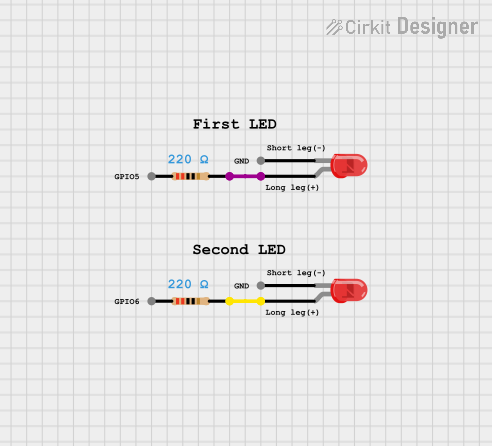
 Open Project in Cirkit Designer
Open Project in Cirkit Designer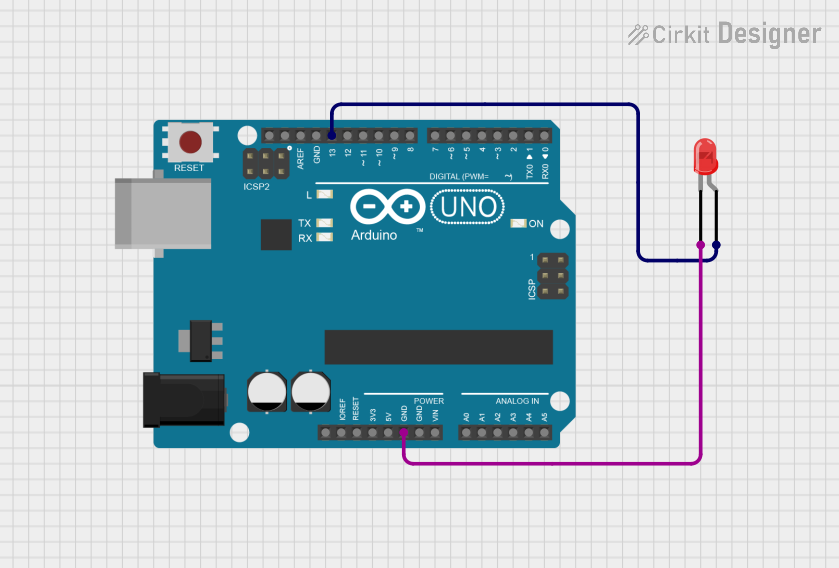
 Open Project in Cirkit Designer
Open Project in Cirkit DesignerExplore Projects Built with LED Two Pin (Red)

 Open Project in Cirkit Designer
Open Project in Cirkit Designer
 Open Project in Cirkit Designer
Open Project in Cirkit Designer
 Open Project in Cirkit Designer
Open Project in Cirkit Designer
 Open Project in Cirkit Designer
Open Project in Cirkit DesignerCommon Applications
- Power and status indicators in electronic devices
- Digital displays and signage
- DIY electronics and hobby projects
- Arduino and microcontroller-based circuits
- Decorative and ambient lighting
Technical Specifications
Below are the key technical details of the LED Two Pin (Red):
| Parameter | Value |
|---|---|
| Forward Voltage (Vf) | 1.8V to 2.2V |
| Forward Current (If) | 20mA (typical) |
| Maximum Current (Imax) | 30mA |
| Wavelength | 620nm to 630nm (red light) |
| Viewing Angle | 20° to 30° |
| Polarity | Anode (+), Cathode (-) |
Pin Configuration
The LED Two Pin (Red) has two terminals:
| Pin | Description |
|---|---|
| Anode (+) | The longer leg of the LED, connected to the positive terminal of the power source. |
| Cathode (-) | The shorter leg of the LED, connected to the negative terminal or ground. |
Usage Instructions
How to Use the LED in a Circuit
Determine the Resistor Value: To prevent damage to the LED, always use a current-limiting resistor in series with it. The resistor value can be calculated using Ohm's Law: [ R = \frac{V_{supply} - V_f}{I_f} ] Where:
- ( V_{supply} ) is the supply voltage.
- ( V_f ) is the forward voltage of the LED (1.8V to 2.2V).
- ( I_f ) is the desired forward current (typically 20mA).
Connect the LED:
- Connect the anode (+) to the positive terminal of the power source through the resistor.
- Connect the cathode (-) to the ground.
Power the Circuit: Apply the appropriate voltage to the circuit. The LED will emit red light when current flows through it.
Important Considerations
- Polarity: LEDs are polarized components. Reversing the polarity may prevent the LED from lighting up or damage it.
- Current Limiting: Always use a resistor to limit the current. Exceeding the maximum current rating (30mA) can permanently damage the LED.
- Heat Dissipation: While LEDs are efficient, excessive current can cause overheating. Ensure proper current regulation.
Example: Connecting to an Arduino UNO
Below is an example of how to connect and control the LED Two Pin (Red) using an Arduino UNO:
Circuit Setup
- Connect the anode (+) of the LED to a 220Ω resistor.
- Connect the other end of the resistor to digital pin 13 on the Arduino.
- Connect the cathode (-) of the LED to the GND pin on the Arduino.
Arduino Code
// LED Blink Example for Arduino UNO
// This code blinks a red LED connected to pin 13 at 1-second intervals.
const int ledPin = 13; // Define the pin connected to the LED
void setup() {
pinMode(ledPin, OUTPUT); // Set the LED pin as an output
}
void loop() {
digitalWrite(ledPin, HIGH); // Turn the LED on
delay(1000); // Wait for 1 second
digitalWrite(ledPin, LOW); // Turn the LED off
delay(1000); // Wait for 1 second
}
Troubleshooting and FAQs
Common Issues
LED Does Not Light Up:
- Cause: Incorrect polarity.
- Solution: Ensure the anode (+) is connected to the positive terminal and the cathode (-) to ground.
LED is Dim:
- Cause: Resistor value too high.
- Solution: Recalculate the resistor value to allow more current (but within the safe range).
LED Burns Out:
- Cause: Excessive current due to missing or incorrect resistor.
- Solution: Always use a current-limiting resistor and verify its value.
Flickering LED:
- Cause: Unstable power supply or loose connections.
- Solution: Check the power source and ensure all connections are secure.
FAQs
Q: Can I connect the LED directly to a 5V power source?
A: No, you must use a current-limiting resistor to prevent damage to the LED.Q: What happens if I reverse the polarity?
A: The LED will not light up, but it is unlikely to be damaged unless excessive reverse voltage is applied.Q: Can I use this LED with a 3.3V microcontroller?
A: Yes, but ensure you calculate the appropriate resistor value for the 3.3V supply.
By following these guidelines, you can effectively use the LED Two Pin (Red) in your projects!